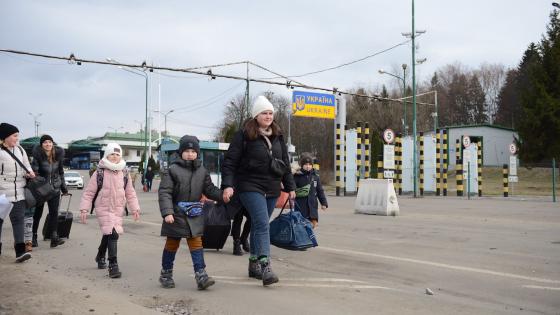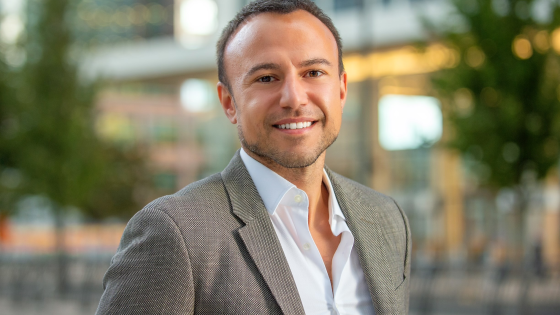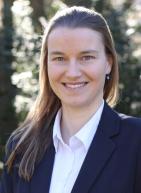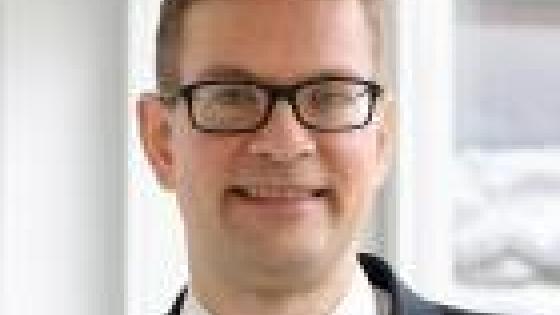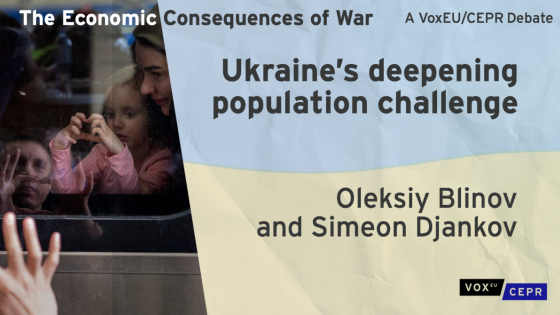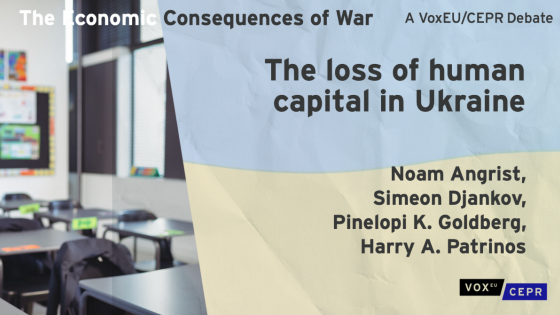More than 4 million Ukrainians are currently staying in the EU with temporary protection status. The return of these refugees is vital for Ukraine’s reconstruction, as many would bring with them essential skills and resources that are crucial for rebuilding their country. Moreover, their return can help relieve the economic, social, and political pressures experienced by host countries – pressures such as overburdened public services, increased job competition, and social cohesion challenges. However, it is unrealistic to expect that all refugees will return, and it is in the interest of refugees and their host countries to help those who do not return to Ukraine to integrate as well as possible in their new homes.
Previous literature suggests that although many refugees, particularly those in countries neighbouring their own, initially intend to return when conditions are safe, a substantial number ultimately choose to remain in their host countries (Alrababa’h et al. 2023, UNHCR 2023). However, there is a lack of systematic evidence on how refugees’ intentions to return change over time, how accurately these intentions predict actual return, and the impact of conflict in refugees’ home regions on their return plans, actual return, and integration. This evidence gap arises from the limited availability of longitudinal data that track refugees over time and across countries. The analysis of cross-sectional data is often insufficient to determine the causal effect of conflict on return (intentions), as unobserved heterogeneity among individuals may depend on the intensity of conflict prior to departure.
In Adema et al. (2024), we address these issues through a longitudinal survey of Ukrainian refugees. We launched this survey in partnership with Verian (formerly Kantar Public) across Europe in June 2022. This initiative was born in response to Russia’s full-scale invasion of Ukraine on 24 February 2022, which caused the largest refugee crisis in Europe since WWII. We repeatedly ask respondents about their current location, return plans, and integration outcomes, and link this information to geocoded data on conflict intensity in their home municipality. By exploiting conflict intensity between interviews, we estimate the causal effect of local conflict on actual return, return plans, and integration outcomes. In addition, by collecting refugees’ expectations about the duration and resolution of the war, we examine how changes in these expectations affect the same set of outcomes. Here are some key takeaways from our research.
There is a strong desire among Ukrainians to return home
Our descriptive findings indicate a strong desire among Ukrainians to return home. Initially, around two-thirds of Ukrainian refugees intended to return either soon or when it becomes safe, and one in ten planned to settle permanently abroad. Return plans strongly predict actual return: 33% of those who initially intended to return soon did so, while none of those who planned to settle permanently outside Ukraine has returned. The realised return rate was 2.7 percentage points per 100 days. The net increase in plans to settle outside Ukraine was 1.6 percentage points per 100 days. As a flip side of actual return and gradual increase in plans to settle outside Ukraine, the number of individuals who said they would return when it was safe to do so has decreased sharply over time (4.7 percentage points per 100 days) (Figure 1).
Figure 1 Within-individual return intentions and return over time since arrival
Notes: Binned scatterplot with non-parametric trend for levels of return intentions over time, net of individual fixed effects, with 90% confidence interval. For each level of return intentions, we perform the following procedure. First, we assign all observations to 20 equally sized bins over the number of days since arrival in the destination country of residence in the baseline survey. We residualise the outcome by regressing it on individual fixed effects and the number of days since arrival in the first destination country. We perform this procedure for 100 bootstrap samples to obtain smoothed 90% confidence intervals. We draw markers for (i) the mean for each of the 20 equally sized bins, (ii) a predicted mean for each bin of the number of days since arrival, and (iii) a 90% confidence interval around the predicted mean. N = 8,752.
Intensive local conflict redirects return but does not deter it
Figure 2 presents the results on the effect of conflict and predictors of changes in return (intentions). We find that the liberation of their home district significantly increases the likelihood of an individual returning to Ukraine and simultaneously reduces the propensity to make new plans to settle outside Ukraine. The similarity in the point estimates for returning to Ukraine in general and returning specifically to one’s home municipality suggests that most of the increase in returns to Ukraine is due to people returning to their home municipalities after the liberation of their district. Conversely, continued occupation does not have a statistically significant impact on any of the outcomes.
Turning to the effect of conflict intensity, we find that more intense conflict in one’s home municipality reduces return there, but not to Ukraine in general. A one standard deviation higher conflict intensity reduces return to one’s home municipality by 1.8 percentage points, but return to Ukraine altogether by only 0.8 percentage points. Furthermore, more intense conflict in the home municipality makes it more likely that refugees start planning to settle outside Ukraine.
We also examined additional predictors of return in Figure 2. Having a partner in Ukraine increases the likelihood of returning by 9.7 percentage points. Surprisingly, proficiency in English increases the likelihood of returning. At the same time, English speakers are also more likely to consider settling outside of Ukraine for the first time. These findings suggest that, if anything, return migrants are not negatively selected from the available sample of migrants. Tertiary education does not correlate with return or return plans.
Figure 2 The effect of conflict and predictors of changes in return (intentions)
Notes: This figure shows coefficient plots of three multivariate OLS regressions. The outcomes (from left to right) are ‘returned to Ukraine’, ‘returned to home municipality’, and ‘started to plan to settle outside Ukraine’ on conflict-related variables and personal characteristics. 95% confidence intervals are based on standard errors clustered at the district level. ‘Home district liberated’ and ‘Home district still occupied’ are binary indicators for full liberation of one’s home district and whether one’s district is at least partially occupied during both survey waves. The reference category is districts that have been continuously under Ukrainian control. ‘Local conflict between interviews’ is the standardised first PCA of conflict intensity. Baseline controls are initial levels of return intentions, age bins (18–24; 25–34; 35–44; 45–54; 55–59; 60–64; 65 and older), the number of days elapsed between the two waves, the population of one’s home municipality, population squared, and binary indicators for gender, partnership status, tertiary education, speaking English, originating from an urban area in Ukraine, being accompanied by children, having a partner left in Ukraine, having children left in Ukraine, continuing one’s Ukrainian job remotely, having left Ukraine before 24 February 2022, originating from a territory that was occupied by Russia or allied forces before 24 February 2022, and answering the survey in Russian. For simplicity of exposition, not all control variables are shown in the figure.
Integration outcomes
Theory suggests that refugees who do not intend to return invest more in acquiring host country-specific human capital, such as language skills, and integrating into the local labour market (Chiswick and Miller 1994). Figure 3 displays the regression coefficients for four key measures of economic, subjective, and linguistic integration.
Our results suggest that the conflict variables have no significant effect on whether refugees are employed. The liberation of one’s home district appears to make refugees less likely to participate in any kind of training, which aligns with a higher likelihood of return reducing incentives to invest in integration in the host country (Cortes 2004, Adda et al. 2022). Conversely, if one’s home district remains occupied for the duration of our surveys, refugees report a positive change in their subjective integration. This can be attributed to the lower return intentions among this group, which encourages investment in integration. Conflict intensity in the home municipality does not appear to systematically affect integration outcomes. Individuals from regions with higher conflict intensity are slightly less likely to have started a language course, although this result is only statistically significant at the 10% level.
Figure 3 Conflict and different integration outcomes
Notes: This figure shows coefficient plots of four multivariate OLS regressions. 95% confidence intervals are based on standard errors clustered on the district level. We restrict the sample to all respondents 25–59 years old. The outcomes in the first two columns are in levels on the long differences sample, and control for initial levels of started working or not in wave 1. N = 1,966 for both. The last two columns are changes on the sample of long differences between the earliest response in waves 2 and 3 and the response in wave 6. N = 503 and N = 544, respectively. The latter two do not include estimates for ‘home district liberated’, as no district was liberated during the sample period. All other control variables are identical to those in Figure 2.
Some implications
The success of post-war reconstruction and development efforts in Ukraine will depend crucially on the quantity and quality of the available human capital. The Ukrainian population had been declining even before the Russian invasion, with deaths outnumbering births annually since 1991 (Djankov and Blinov 2022). Furthermore, pervasive corruption and low confidence in the judiciary – underscored by Ukraine’s ranking of 104th out of 180 countries in the 2023 Corruption Perceptions Index – act as deterrents to return migration. A critical challenge for Ukraine will be to leverage the common purpose fostered by the war to drive broader institutional and cultural changes. By addressing these challenges, Ukraine can enhance the appeal of returning for refugees and effectively utilise their human capital in the post-war rebuilding process.
References
Adda, J, C Dustmann, and J S Görlach (2022), “The dynamics of return migration, human capital accumulation, and wage assimilation”, The Review of Economic Studies 89(6): 2841–71.
Adema, J A, C G Aksoy, Y Giesing, and P Poutvaara (2024), “The effect of conflict on refugees’ return and integration: Evidence from Ukraine”, CEPR Discussion Paper 19012.
Alrababa’h, A, D Masterson, M Casalis, D Hangartner, and J Weinstein (2023), “The dynamics of refugee return: Syrian refugees and their migration intentions”, British Journal of Political Science 53(4): 1108–31.
Chiswick, B R, and P W Miller (1994), “The determinants of post-immigration investments in education”, Economics of Education Review 13(2): 163–77.
Cortes, K E (2004), “Are refugees different from economic immigrants? Some empirical evidence on the heterogeneity of immigrant groups in the US”, Review of Economics and Statistics 86: 465–80.
Djankov, S, and O Blinov (2022), “Ukraine’s deepening population challenge”, VoxEU.org, 28 June.
UNHCR (2023), “Eighth regional survey on Syrian refugees’ perceptions and intentions on return to Syria”, The UN Refugee Agency.
